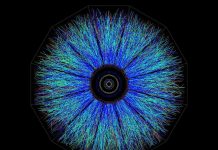
Have you ever played with magnets as a kid, or maybe used them to pin your grocery list on the fridge?
Well, magnets are about to get a lot cooler and more high-tech, thanks to some exciting new research.
Scientists have now discovered a way to trap light inside magnets. Yes, you read that right – light, trapped inside a magnet!
Let’s break this down a bit. Vinod M. Menon and his team of scientists at the City College of New York have been looking at magnets in a completely new way.
In their latest study, they’ve shown that certain types of magnets can “grab onto” light and keep it there. This isn’t just a neat trick; it can lead to big improvements in how some technologies work.
In simple terms, this particular magnet has something called excitons. These are a bit like mini light sponges, soaking up light and making it bounce back and forth inside the magnet.
Dr. Florian Dirnberger, who led the study, said, “Imagine being inside a room full of mirrors. The light bounces all around. That’s kind of what’s happening inside this magnet.”
What’s even more astonishing is how this magnet responds when they play with it. When the scientists applied a magnetic field, the trapped light inside the magnet reacted so strongly that the magnet changed color.
To put that into perspective, it’s like having a red apple suddenly turn green because you held a magnet close to it. That’s a powerful response!
Now, if you’re wondering why this is a big deal, here’s the thing: magnets and light usually don’t play well together.
Vinod M. Menon said, “Light typically doesn’t care much about magnets.” But in this case, they’ve discovered a magnet that can interact strongly with light. This opens up many possibilities for new and improved tech gadgets.
Jiamin Quan, one of the authors of the study, gave some insights on this. Right now, most of our tech devices that use magnets focus on magneto-electric effects (that’s a fancy way of saying how magnets interact with electricity).
But with this new discovery, we could soon have devices that use the strong bond between magnets and light. For example, we might have magnetic lasers or new types of memory for our computers that use light instead of electricity.
The bottom line? This new research is like finding out that your old childhood toy has a hidden superpower.
By unlocking the potential of magnets to interact with light in such a powerful way, we’re paving the way for more advanced and efficient technology.
In the future, when you turn on a light or use a tech device, just remember that the humble magnet – and the scientists who worked to uncover its secrets – might have played a crucial role in making it all possible.
Follow us on Twitter for more articles about this topic.



